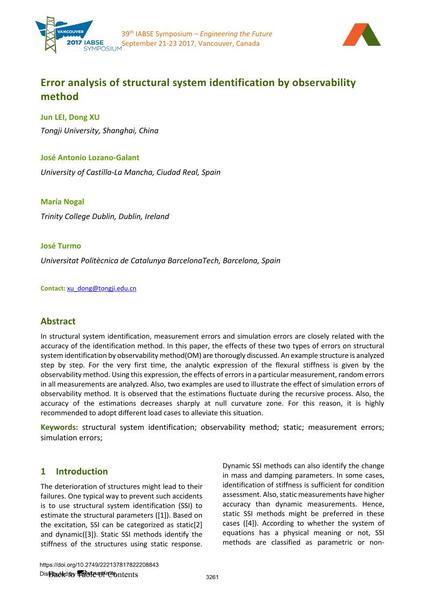Error analysis of structural system identification by observability method

|
|
|||||||||||
Bibliografische Angaben
| Autor(en): |
Jun Lei
(Tongji University, Shanghai, China)
Dong Xu (Tongji University, Shanghai, China) Jose Antonio Lozano-Galant Maria Nogal (Trinity College Dublin, Dublin, Ireland) José Turmo |
||||
|---|---|---|---|---|---|
| Medium: | Tagungsbeitrag | ||||
| Sprache(n): | Englisch | ||||
| Tagung: | IABSE Symposium: Engineering the Future, Vancouver, Canada, 21-23 September 2017 | ||||
| Veröffentlicht in: | IABSE Symposium Vancouver 2017 | ||||
|
|||||
| Seite(n): | 3261-3268 | ||||
| Anzahl der Seiten (im PDF): | 8 | ||||
| Jahr: | 2017 | ||||
| DOI: | 10.2749/222137817822208843 | ||||
| Abstrakt: |
In structural system identification, measurement errors and simulation errors are closely related with the accuracy of the identification method. In this paper, the effects of these two types of errors on structural system identification by observability method(OM) are thorougly discussed. An example structure is analyzed step by step. For the very first time, the analytic expression of the flexural stiffness is given by the observability method. Using this expression, the effects of errors in a particular measurement, random errors in all measurements are analyzed. Also, two examples are used to illustrate the effect of simulation errors of observability method. It is observed that the estimations fluctuate during the recursive process. Also, the accuracy of the estimations decreases sharply at null curvature zone. For this reason, it is highly recommended to adopt different load cases to alleviate this situation. |
||||
